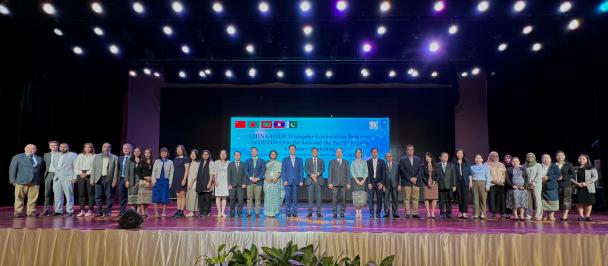World Malaria Day is an occasion to take stock of our progress and the remaining challenges in the fight against one of the world’s biggest killers. In recent decades it has largely been a success story. Since 2000 there’s been a 60 percent drop in death rates due to mass distribution of bed nets, education, and rigorous testing and treatment programmes.
But the last year has been very different. The COVID-19 crisis has taken centre stage, and among the less reported consequences of the pandemic are its effects on efforts to fight life-threatening diseases such as malaria. A recent report from the Global Fund shows that in 2020 COVID-19 severely disrupted health systems and delivery of HIV, TB and malaria services in low- and middle-income countries in Africa and Asia. Where COVID-19 is disrupting health services, it is vital to adapt to ensure that the most vulnerable are still reached. Different countries approached the challenges in different ways.
In Guinea Bissau, malaria is the leading cause of death, with pregnant women and children under the age of five particularly at risk. In early 2020, during the onset of the pandemic, the government ordered special measures including a curfew a travel ban. These measures had a significant effect on malaria programmes because they restricted the movement of health workers and patients were unable to go to health centres. The malaria programme managed by UNDP had to quickly adapt.
Unlike in previous programmes, where the nets were handed out at distribution points, now a door-to-door distribution method was used, combined with physical distancing, hand washing, and use of personal protective equipment (PPE). This required a tripling of the number of community health workers and volunteers from 6,000 in a normal year to 18,000. The campaign distributed more than 1.3 million bed nets, covering 2.3 million people, almost the entire population of the country.
Malaria is also a leading cause of death in Chad, especially with children under the age of five and pregnant women. As in Guinea Bissau, the programme adopted a safe and socially distanced door-to-door distribution method. Seasonal malaria chemoprevention teams were provided with PPE, and an extra layer of prevention was introduced for children. The teams were not permitted to meet children directly. Instead, parents were given tablets and instructed on how to administer them.
The door-to-door distribution proved popular with health centre managers, community leaders and the public. As one person put it, “this way of distributing the mosquito nets means that no household is forgotten because everything is happening in full view of everyone." It is likely that door-to-door distribution will continue, even after the pandemic.
In Vanuatu malaria has historically been one of the leading causes of ill health. When the pandemic hit in early 2020, there was also the aftermath of the Category 5 Tropical Cyclone Harold, which caused widespread damage. It raised the risk of communicable and vector-borne diseases, prompting the government to rapidly coordinate distribution of bed nets.
Staff working on malaria programmes were reassigned to priority COVID-19-related activities, including community-awareness activities and work to strengthen health information. Borders were closed, prohibiting international surge support. Post-disaster plans included anti-malarial education and bed net distribution, as well as information on COVID-19 and associated safety measures. Households were given a time to collect their nets to avoid mass gatherings.
In Djibouti a Global Fund grant helped with vector control, which included distributing insecticide-treated nets, as well as indoor spraying. Due to the pandemic the size of spray teams was reduced, and teams were trained on safety to avoid the spread of the virus.
A new open-source mobile data collection and management tool, the KoBo Toolbox, was also introduced. It has helped the government to get real-time data, troubleshoot implementation challenges, and share decision-making with communities. A communications campaign was run during the two-month lockdown, and messages went out on radio, TV and Facebook telling people how to get a Malaria Rapid Diagnostic Test.
Challenges like these may become more common in the future, and countries need to be ready to adapt. Sharing knowledge and effectively pooling experience, coupled with adequate resources and decisive action, will take us one step closer to ending malaria as a public health threat, even during a health and development crisis.

 Locations
Locations




